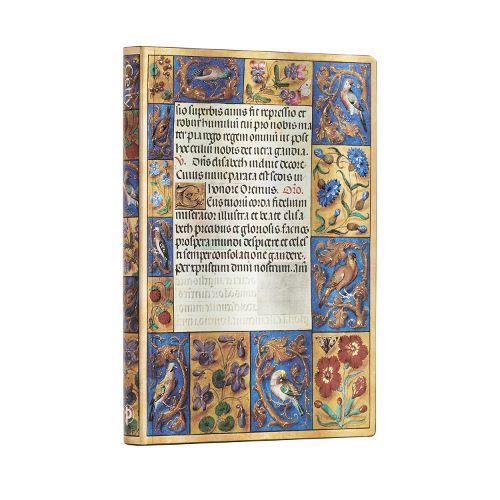Readings Newsletter
Become a Readings Member to make your shopping experience even easier.
Sign in or sign up for free!
You’re not far away from qualifying for FREE standard shipping within Australia
You’ve qualified for FREE standard shipping within Australia
The cart is loading…






With pages displaying astounding plays of naturalistic illusionism, the luxurious personal prayer book known as the Spinola Hours is one of the most visually sophisticated Flemish manuscripts of the 16th century.A book of hours contains texts including a calendar of Church holidays, the Hours of the Virgin (a cycle of prayer services devoted to the Virgin Mary), the Office for the Dead, and other prayers, hymns and readings. This particular example augments these contents with a special series of weekday offices and masses, providing even more possibilities for rich illuminations. The book was undoubtedly commissioned for a wealthy patron, perhaps Margaret of Austria, for whom the Master of James IV of Scotland, a famed manuscript illuminator and painter, produced other works. In the 1700s it belonged to the Spinola family in Genoa, from whom it takes its modern name.We are honoured to feature this unparalleled example of illumination from the J. Paul Getty Museum as part of our collaborative collection.
$9.00 standard shipping within Australia
FREE standard shipping within Australia for orders over $100.00
Express & International shipping calculated at checkout
With pages displaying astounding plays of naturalistic illusionism, the luxurious personal prayer book known as the Spinola Hours is one of the most visually sophisticated Flemish manuscripts of the 16th century.A book of hours contains texts including a calendar of Church holidays, the Hours of the Virgin (a cycle of prayer services devoted to the Virgin Mary), the Office for the Dead, and other prayers, hymns and readings. This particular example augments these contents with a special series of weekday offices and masses, providing even more possibilities for rich illuminations. The book was undoubtedly commissioned for a wealthy patron, perhaps Margaret of Austria, for whom the Master of James IV of Scotland, a famed manuscript illuminator and painter, produced other works. In the 1700s it belonged to the Spinola family in Genoa, from whom it takes its modern name.We are honoured to feature this unparalleled example of illumination from the J. Paul Getty Museum as part of our collaborative collection.